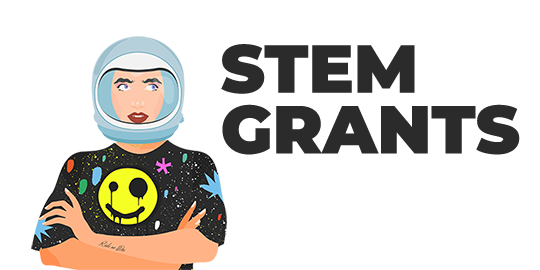NSF Undergrad STEM Pathways into Geoscience- NOI DUE: 9-21-18
NSF Research Experiences for Teachers in Engineering & CS – DUE: 9-19-18
September 1, 2018Improving Undergraduate STEM Education: Ed and HR – DUE: 10-1-18
September 2, 2018A well-prepared, innovative science, technology, engineering and mathematics (STEM) workforce is crucial to the Nation’s health and economy. Indeed, recent policy actions and reports have drawn attention to the opportunities and challenges inherent in increasing the number of highly qualified STEM graduates, including STEM teachers. Priorities include educating students to be leaders and innovators in emerging and rapidly changing STEM fields as well as educating a scientifically literate populace. Both of these priorities depend on the nature and quality of the undergraduate education experience. In addressing these STEM challenges and priorities, the National Science Foundation invests in evidence-based and evidence-generating approaches to understanding STEM learning; to designing, testing, and studying instruction and curricular change; to wide dissemination and implementation of best practices; and to broadening participation of individuals and institutions in STEM fields. The goals of these investments include: increasing the number and diversity of STEM students; preparing students well to participate in science for tomorrow;, and improving students’ STEM learning outcomes.
NSF’s Improving Undergraduate STEM Education (IUSE) initiative, launched in Fiscal Year 2014, supports a coherent set of investments to address immediate challenges and opportunities that are facing undergraduate STEM education, as well as those that anticipate new structures (e.g. organizational changes, new methods for certification or credentialing, course re-conception, cyberlearning, etc.) and new functions of the undergraduate learning and teaching enterprise. The NSF-wide IUSE initiative acknowledges the variety of discipline-specific challenges and opportunities facing STEM faculty as they strive to incorporate results from educational research into classroom practice and work with education research colleagues and social science learning scholars to advance our understanding of effective teaching and learning.
The Directorate for Geosciences (GEO) contributes to the IUSE initiative through the Improving Undergraduate STEM Education: Pathways into Geoscience (IUSE: GEOPATHS) funding opportunity. IUSE: GEOPATHS invites proposals that specifically address the current needs and opportunities related to undergraduate education within the geosciences community. The primary goal of the IUSE: GEOPATHS funding opportunity is to increase the number of undergraduate students interested in pursuing undergraduate degrees and/or post-graduate degrees in geoscience through the design and testing of novel approaches for engaging students in authentic, career-relevant experiences in geoscience. In order to broaden participation in the geosciences, engaging undergraduate students from traditionally underrepresented groups or from non-geoscience degree programs is a priority. The IUSE: GEOPATHS solicitation features two funding tTracks: (1) Engaging students in the geosciences through extra-curricular experiences and training activities (GEOPATHS-EXTRA), and (2) Improving pathways into the geosciences through institutional collaborations and transfer (GEOPATHS-IMPACT).
Award Information
Anticipated Type of Award: Standard Grant or Continuing Grant
Estimated Number of Awards: 20
In FY 2019, NSF expects to make up to 20 awards through this competition, with ~10 awards being made in the GEOPATHS-EXTRA track and ~10 awards being made in the GEOPATHS-IMPACT track.
Anticipated Funding Amount: $6,000,000
NSF anticipates available funding for the IUSE: GEOPATHS program to be approximately $6 million total in FY 2019, subject to availability of funds.
Eligibility Information
Who May Submit Proposals:
Proposals may only be submitted by the following:
- Institutions of Higher Education (IHEs) – Two- and four-year IHEs (including community colleges) accredited in, and having a campus located in the US, acting on behalf of their faculty members. Special Instructions for International Branch Campuses of US IHEs: If the proposal includes funding to be provided to an international branch campus of a US institution of higher education (including through use of subawards and consultant arrangements), the proposer must explain the benefit(s) to the project of performance at the international branch campus, and justify why the project activities cannot be performed at the US campus.
Who May Serve as PI:
There are no restrictions or limits.
Limit on Number of Proposals per Organization:
An organization may serve as sole submitting institution or as lead institution of a collaborative project on only one submission per competition, regardless of track, but may serve as the non-lead institution of a collaborative project more than once per competition. Additional eligibility requirements are described later in the solicitation.
Potential PIs are advised to contact their institutional office of research regarding processes used to select proposals for submission.
Limit on Number of Proposals per PI or Co-PI:
A Principal Investigator may serve in the role of PI or Co-PI on only one proposal per competition if they are at the sole-submitting institution or the lead institution of a collaborative project, but may serve as the Co-PI for a non-lead institution of a collaborative project more than once per competition.
FOR MORE INFORMATION VISIT: https://www.nsf.gov/publications/pub_summ.jsp?WT.z_pims_id=505169&ods_key=nsf18583
